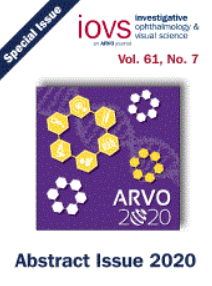Image Quality and Retinal Vascular Metrics in the Community using Optical Coherence Tomography Angiography
Saleema A. Kherani, Xinxing Guo, Lubaina Arsiwala, Yanan Dong, Xiangrong Kong, A. Richey Sharrett,
Pradeep Y Ramulu, David Huang, Brandon J Lujan, Alexander Tomlinson, Alison Abraham
Purpose: Retinal markers from optical coherence tomography angiography (OCTA) are of growing interest in epidemiological studies. We evaluated the impact of image quality on the estimation of OCTA retinal vascular metrics in a community-based sample of older adults.
Methods: Optovue RTVue 6x6mm2 OCTA macular images were captured in participants from the Eye Determinants of Cognition (EyeDOC) study. Images were graded as passed or failed quality assessment (QA) by trained graders at an established OCTA reading center. Passed images had signal strength index (SSI) ≥55 and absence of significant image artifacts. We included 120 QA pass-fail image pairs from the same eye. Vessel density (VD) of superficial capillary plexus (SCP, from internal limiting membrane to inner plexiform layer), and deep capillary plexus (DCP, from inner nuclear layer to outer plexiform layer) within 3 ETDRS rings – foveal (1mmx1mm), parafoveal (3mmx3mm), and perifoveal (6mmx6mm) – and foveal avascular zone (FAZ) area were estimated by Optovue software. Overall agreement between each QA pass-fail pair was assessed by intraclass correlations (ICC) and Bland-Altman plots. Agreement was also assessed as a function of image SSI.
Results: The median SSI was 57 (range 38-73) in the failed images. The median percentage differences between the passed and failed images were <4% for both SCP and DCP VD of the entire scanning area. For all the VD parameters, ICCs were higher for SCP compared to DCP. ICCs ranged between 0.81-0.92 for SCP, 0.61-0.85 for DCP, and 0.77-0.86 for FAZ parameters (Table 1). Bland-Altman plots showed good agreement among all retinal vascular parameters for SCP and DCP. Review of OCTA images with poor agreement indicated the following contributors: pathology causing significant distortion of retinal architecture; SSI <47 with scan quality <5; ≥1 artifact involving the center or multiple quadrants.
Conclusions: The median SSI was 57 (range 38-73) in the failed images. The median percentage differences between the passed and failed images were <4% for both SCP and DCP VD of the entire scanning area. For all the VD parameters, ICCs were higher for SCP compared to DCP. ICCs ranged between 0.81-0.92 for SCP, 0.61-0.85 for DCP, and 0.77-0.86 for FAZ parameters (Table 1). Bland-Altman plots showed good agreement among all retinal vascular parameters for SCP and DCP. Review of OCTA images with poor agreement indicated the following contributors: pathology causing significant distortion of retinal architecture; SSI <47 with scan quality <5; ≥1 artifact involving the center or multiple quadrants.
This is a 2020 ARVO Annual Meeting abstract.
https://iovs.arvojournals.org/article.aspx?articleid=2769678
